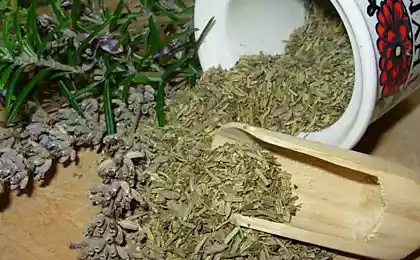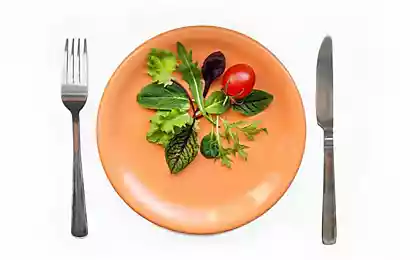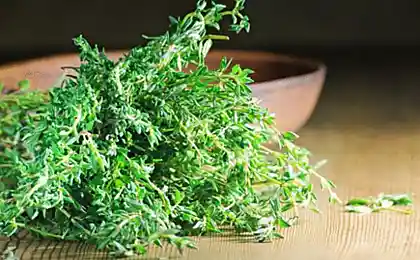408
Perfect spice you have in the garden
Hello, dear friends and gardeners! Today I will not be distracted by description of medicinal and other useful properties of thyme, because if you reached this article, you already well know about them.

It is about how to grow thyme (thyme) on the site I will tell you in detail in this article.
In the garden, to propagate thyme is a variety of ways, usually by division of the Bush, cuttings or seeds. For the separation of a Bush, in the spring dig up and carefully separate into individual plants.
Creeping along the ground species are propagated primarily vegetatively – those parts that are already rooted, pruned and planted separately directly to the desired location or in the rearing and formation. Miniature types forming a cushion, propagated by taking hardwood cuttings of 3-5 cm, and with the beginning of spring, rooting them in greenhouses or indoor propagator. The roots are growing into the second or third week.
Stick method is good because the plant just get more Mature and develops much faster, but it requires a lot of manual work in the indoor environment. Seed propagation is preferable, as we can immediately obtain planting material in large numbers, and often even avoid transplantation. Thus, seeds are sown directly into the soil in the spring or late autumn under the snow. In spring sow them in the intended place, there's organizing time frames, cans, on beds or in special greenhouses. You should pay attention to the weeds where the seeded thyme. Since the seeds had a very small – 1,000 seeds weigh only 300-500 mg, the seedlings can simply get lost or might be smothered by weeds. It is possible to grow seedlings of thyme from seed as well as cuttings, in the indoor propagator.
Soil for planting of seeds or cuttings should be light, moisture-permeable, preferably a 1:1 mixture of peat and sand. Seeds are planted 2-3 cm in rows no deeper than 1 cm In 7-10 days shoots appear. When adequate moisture is the most optimal temperature for this lies in a very wide range from +20 °C to +35 °C. In the open ground the seedlings of thyme hatch in 3-4 weeks. At room conditions the sprouts should be immediately moved to a cool well-lit place.

Watering should be moderate, only in the case when the upper soil layer is already running dry, because the decay from excess moisture beach seedlings of thyme. Too often thinned seedlings, or dive into individual boxes, achieving an approximate density of 2x2 cm At the age of 2 months, the seedlings are already turning into small bushes, which sit on the permanent place of growth. It can be done at any time, but not in late autumn, for the seedlings to frosts need to be taken. The flowering thyme starts in the second year, however, when planting cuttings, or with very early planting by seed, you can expect flowering in the first year in the fall.
Source: ayatskov1.ru

It is about how to grow thyme (thyme) on the site I will tell you in detail in this article.
In the garden, to propagate thyme is a variety of ways, usually by division of the Bush, cuttings or seeds. For the separation of a Bush, in the spring dig up and carefully separate into individual plants.
Creeping along the ground species are propagated primarily vegetatively – those parts that are already rooted, pruned and planted separately directly to the desired location or in the rearing and formation. Miniature types forming a cushion, propagated by taking hardwood cuttings of 3-5 cm, and with the beginning of spring, rooting them in greenhouses or indoor propagator. The roots are growing into the second or third week.
Stick method is good because the plant just get more Mature and develops much faster, but it requires a lot of manual work in the indoor environment. Seed propagation is preferable, as we can immediately obtain planting material in large numbers, and often even avoid transplantation. Thus, seeds are sown directly into the soil in the spring or late autumn under the snow. In spring sow them in the intended place, there's organizing time frames, cans, on beds or in special greenhouses. You should pay attention to the weeds where the seeded thyme. Since the seeds had a very small – 1,000 seeds weigh only 300-500 mg, the seedlings can simply get lost or might be smothered by weeds. It is possible to grow seedlings of thyme from seed as well as cuttings, in the indoor propagator.
Soil for planting of seeds or cuttings should be light, moisture-permeable, preferably a 1:1 mixture of peat and sand. Seeds are planted 2-3 cm in rows no deeper than 1 cm In 7-10 days shoots appear. When adequate moisture is the most optimal temperature for this lies in a very wide range from +20 °C to +35 °C. In the open ground the seedlings of thyme hatch in 3-4 weeks. At room conditions the sprouts should be immediately moved to a cool well-lit place.

Watering should be moderate, only in the case when the upper soil layer is already running dry, because the decay from excess moisture beach seedlings of thyme. Too often thinned seedlings, or dive into individual boxes, achieving an approximate density of 2x2 cm At the age of 2 months, the seedlings are already turning into small bushes, which sit on the permanent place of growth. It can be done at any time, but not in late autumn, for the seedlings to frosts need to be taken. The flowering thyme starts in the second year, however, when planting cuttings, or with very early planting by seed, you can expect flowering in the first year in the fall.
Source: ayatskov1.ru
The first hybrid vehicle in its history, Subaru
Scientists Monday is not the most difficult day of the week






















